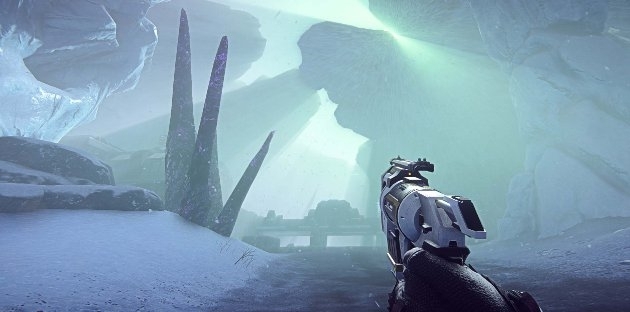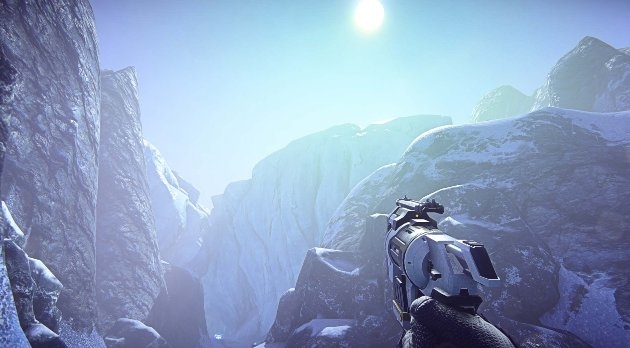PlanetSide 2: Matt Higby on Battle Islands
WIth the unveiling of the Nexus map, PS2's creative director speaks to ZAM
The idea makes so much sense for PlanetSide 2: build toward a competitive tournament while maintaining the edge in your “living” game. Use the cutting edge competitions to inspire and drive social engagements within the ongoing population; instead of divorcing your best teams into cycles of random instanced matchmaking. Matt clarified that they expect to run the competitive aspect of PS2 as seasons—a concept League of Legends fans will be completely familiar with—brackets of outfits fighting it out and eventually leading to a large-scale event, something like an MLG championship or even at SOE Live where the finals would be hosted.
Throughout the course of that season those outfits are jumping in and maybe on Friday Night Ops we run a couple of fights and they can start progressing through the bracket that way.
Getting back to the Nexus itself, I asked if there were any limitations placed on the map. Such as if there were any hard caps on the number of air vehicles to prevent bombing zergs.
The limitations are always based on our meta-game mechanics. Right now, those limitations are based on the resources you can earn to field vehicles; we’re not going to have any hard caps on your ability to get vehicles.
We are doing resource revamps right now to focus players into making decisions between different types of gameplay. If you want to spend all your resources on tanks it means you’re not spending them on things like infantry or air vehicles. We’re working on making that change to our resource system as part of a long-term goal of enhancing our meta-game.
That’s what we always want the limiting factor to be when considering vehicles or explosives and things like that is meta-game mechanics.
For the competition mode we don’t necessarily want to start everybody with full resources and they just pull tanks and do stuff, we’re talking about having an accelerated version of that meta-game mechanic. During the course of a 30 to 45 minute long battle, you would be earning resources at a rate for a different number of vehicles to spawn in the MMO game.
In Battle Islands in the MMO game, vehicles will follow the same rules as the rest of the game.

Being an avid League of Legends player myself, it immediately struck me that the kind of choices players make in MOBAs—regarding accumulating gold in order to buy items—would be similar to the system Matt was describing.
Though the systems we were discussing are very much the future rather than the present for PS2, was that kind of tactical, choice-based accumulation and purchase system what the dev team was aiming for?
That’s absolutely correct. One of the things we’re talking about mechanically is doing something very similar to MOBA games. When you start off as a platoon you actually go through and unlock the weapons you want to get by getting kills. It would be highly accelerated. You would start off with default weapons and through the course of the match you would be able to gain advantage and hone your strategy by unlocking certain weapons or vehicles.
PlanetSide 2 has always been a team-based game, and a fairly strategic team-based game at that, so being able to expose that and allow outfits to define what their strategies are going to be what they’re going to spend towards…I like watching MOBAs a lot because they have that element to them. Are they going to achieve their strategy before their enemy does?
I think that could work really well for PlanetSide too.
Obviously it’s a much larger scale, but the same thing applies, you’re still on the edge of your seat, “Are they going to be able to earn that weapon they really need before the battle at the next base?”
Any good game offers players interesting choices, so many levels in the structure of Battle Islands seem to suggest those kinds of decisions. The terrain itself makes players decide on which outpost to attack based on how conducive they are to their preferred mode of engagement.
Perhaps you have a crack platoon of tank drivers that has been the backbone of your play in the MMO, now you have to decide whether to continue that approach, particularly when Nexus’ environment isn’t necessarily conducive to it at all times. When do you switch to infantry? Do you split your forces between the land and air to hit multiple targets? Then add in the nuance of resource accrual and item purchasing. The possibilities seem almost endless.
That’s where the drama comes in. If you’re a fan of eSports—and I just spent the whole weekend watching people playing StarCraft at MLG, so I’m an enormous fan of eSports and have been for a long time—the drama of a lot of those matches is “Is this person going to be able to execute that strategy that they're going for? Is this other person going to recognize that strategy and be able to counter it effectively?”
Having those elements where people are making those choices, it’s the strategy, the decision making and the execution. It’s not just the twitch gameplay that gets you the win. All of that stuff adds to the drama, the tension that makes watching competitive gameplay really exciting.

Speaking of making broadcast gameplay exciting, I wondered what steps the team at SOE was taking toward making PlanetSide 2 more effective as an eSports experience for viewers. Matt was—as always—honest in his assessment that work still needed to be done.
I consider it to be our biggest challenge; contextualizing the action in PlanetSide 2 to make a compelling viewing experience is an enormous challenge. It needs two things to come together really well, that is the observer camera system; allowing you to see not only an overview of where the world is, but also first-person views of what the player is seeing. Being able to, at a glance, see a scoreboard and the mini-map, to understand where the players are moving and what they’re accomplishing, all those pieces are really important and that’s entirely on our end to develop.
To me it’s the most important thing for us from a game development side. The maps are really important and we have a really good handle on it. The observer system is something we continue to work on and make better. At the end of the day, the players are on the map, but the viewers are watching the observer system, and both of those things have to be really good.
The other piece is the commentary. We need to have commentators who not only know the game in depth but also contextualize all of the things that are happening to the viewer. Making sure they can explain “Hey, this is the strategy that these guys are going for,” so the drama can be conveyed to the viewers.



